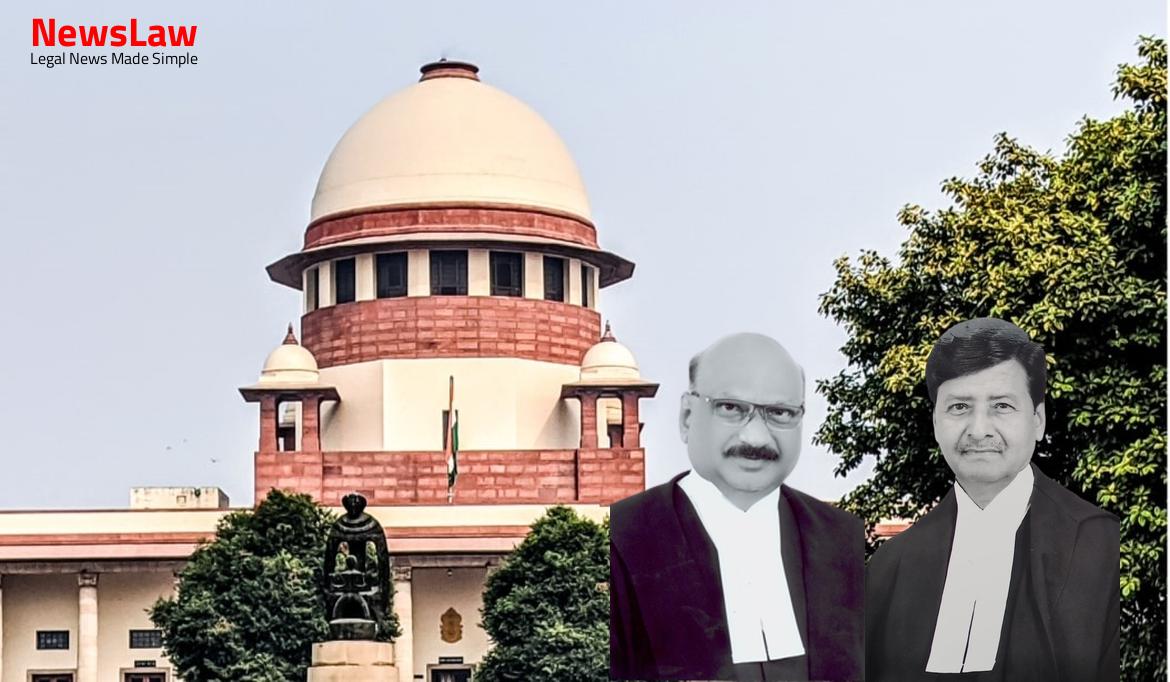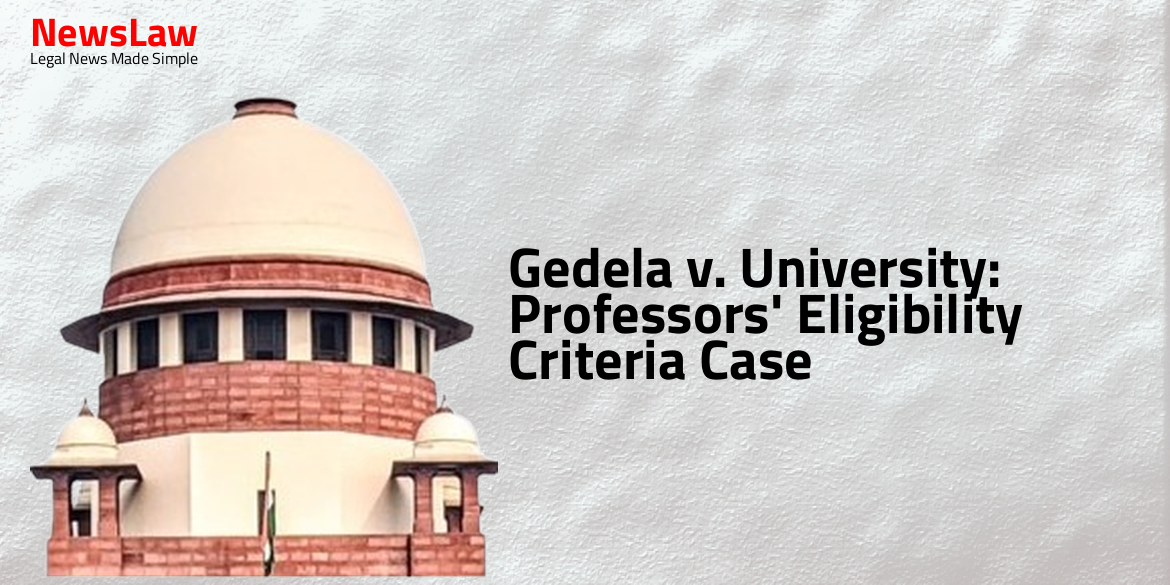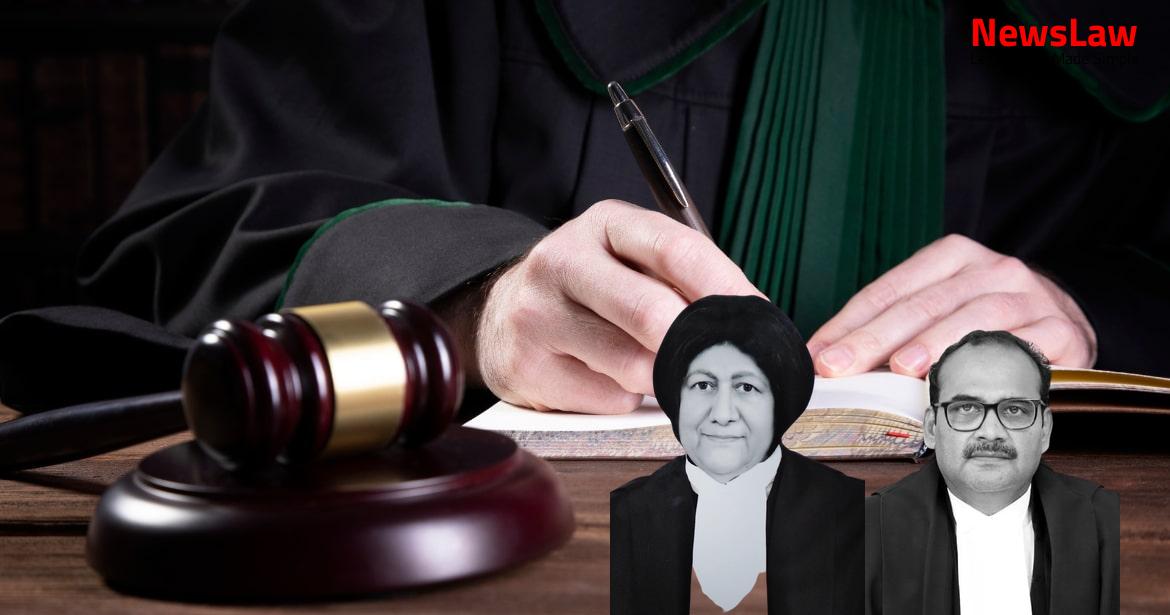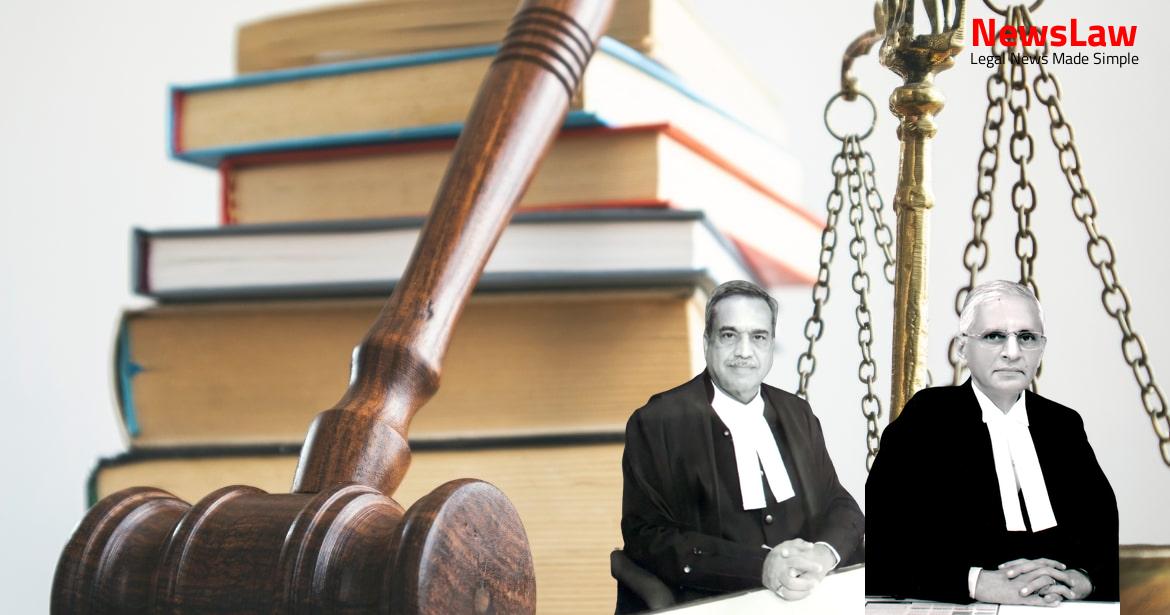Delve into the Supreme Court’s recent ruling on the ‘Bakers Choultry’ endowment dispute. The case involves a longstanding disagreement regarding the nature of the endowment associated with the property. Explore the complex legal arguments and the Court’s decision in this significant case.
Facts
- The genesis of the dispute dates back to 1987 when the predecessor-in-interest of the appellants filed an application under Section 63(a) of the Act for a declaration regarding the ‘Bakers Choultry’ as private property with charitable duties.
- The application was dismissed in 1990, and subsequent appeals up to the High Court were also unsuccessful.
- A civil suit was filed in 1994 challenging the orders of the Deputy Commissioner and Commissioner, but it was dismissed in 1999.
- The High Court dismissed the appeal in 2008, leading to the appellants maintaining possession as per a 2010 order of this Court.
- The present Civil Appeal was filed by the appellants after becoming legal representatives due to the demise of their predecessor.
- The appeal before the High Court of Madras under Section 70(2) of the Act was dismissed in 2008, leading to the current legal proceedings.
- The main issue in question pertains to the nature of the ‘Bakers Choultry’ institution and the type of endowment associated with it.
Arguments
- Counsel for the appellants argues against the concurrent findings of the lower courts regarding the existence of a specific endowment related to the ‘Bakers Choultry’.
- The counsel relies on judgments from the Madras High Court to support the argument that the rock inscription is vague, secular, and does not result in a divestment of title, thus not meeting the criteria of a ‘specific endowment’ under the Act.
- Counsel for the respondents contends that the High Court has already addressed and dismissed these arguments with valid reasoning in the impugned judgment.
- Respondent’s counsel emphasizes that the appellants are challenging four concurrent findings made by the lower courts and the respondent authorities.
- The counsel for the respondent submitted that the predecessors-in-interest of the appellants had participated in previous proceedings where they claimed the property to be trust property.
- It was argued that having made such a claim previously, the appellants could not now claim the property to be private property.
- The respondent’s counsel emphasized the inconsistency in the appellants’ position regarding the nature of the property in question.
Also Read: CRPF Act: Validity of Rule 27 for Compulsory Retirement – Case of Head Constable vs. CRPF
Analysis
- The definition of ‘religious charity’ under the Act is linked to Hindu festivals or observances of a religious nature.
- The Act does not explicitly define ‘public charity’, but it aligns with the scope of benefiting the public as per a Supreme Court decision.
- A specific endowment, which includes money for religious charities, is defined under Section 6(19) of the Act.
- The concept of ‘endow’ and ‘endowment’ signifies dedicating something for a purpose.
- The rock inscription in the case designates funds from ‘Bakers Choultry’ for feeding Brahmins during specified religious festivals.
- The choultry’s management is divested from absolute ownership rights, indicating a valid specific endowment.
- Arguments were largely centered around interpreting a rock inscription from 1834 within ‘Bakers Choultry’.
- The endowment must be for religious charity under the Act, which was evident in feeding Brahmins during religious festivals.
- The inscription restricts the choultry managers from transferring the property, reinforcing the endowment’s validity.
- Money endowed for performing a religious charity is sufficient for constituting a specific endowment under the Act.
- Rock inscription mandates the utilization of bakery business profits for feeding Brahmins during festivals and other charity expenses.
- Those conducting charities of choultries are restricted from alienating choultries and their belongings.
- They have the authority to carry out choultries’ charities appropriately and support Brahmins as per their discretion.
- Key consideration: interpreting whether the inscription constitutes a specific endowment as per the Act.
- Definitions of ‘specific endowment’ and ‘religious charity’ as per Sections 6(19) and 6(16) of the Act provided for context.
- No requirement for a public charity to be associated with a temple or a math as per Act.
- In the case of M.R. Goda Rao Sahib v. The State of Madras, it was held that divestment is necessary for an endowment to exist.
- The settlors must divest themselves of the property endowed to create an endowment.
- The uncertain and fluctuating body of persons associated with a particular religious faith makes no difference in defining a trust as private or public under the Act.
- The rock inscription in the ‘Bakers Choultry’ establishes a religious charity under Section 6(13) of Madras Act 19 of 1951.
- The authorities managing the festival do not control the expression of the festival charity.
- The expression ‘associated’ in the Act means ‘connected with’ or ‘in relation to’.
- The case of K.S. Soundararajan v. Commissioner of Hindu Religious and Charitable Endowments dealt with the nature of charities in a Will involving feeding Brahmins during religious festivals.
- Charities associated with specific religious festivals constitute religious charities under the Act.
- Public charity in the form of feeding Brahmin pilgrims during a festival is considered a religious charity.
- A public trust involves an uncertain and fluctuating body of persons, distinguishing it from a private trust.
- The charity specified in the rock inscription, linked to a religious festival, falls under the definition of a religious charity under the Act.
- Predecessor-in-interest of the appellants had previously claimed ‘Bakers Choultry’ to be a specific endowment.
- Despite withdrawing the previous application, he later filed claiming it as personal property.
- The ‘Bakers Choultry’ and its rock inscription are deemed a specific endowment as per the law and facts of the case.
- High Court judgment, deeming it not the private property of the appellants, is upheld without interference.
Also Read: DAMEPL vs. DMRC: Curative Petition and Arbitral Award Restoration
Decision
- Appeal dismissed with no costs
- Status quo granted on 14.05.2010 stands vacated
- Pending applications also disposed of
Case Title: M.J.THULSIRAMAN Vs. COMMR.
Case Number: C.A. No.-004676-004676 / 2010



